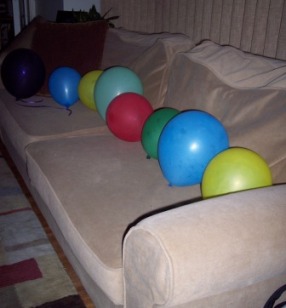This seems an awful shame: a variety of government agencies are using a variety of pretexts (including the War on Terror, anti-drug laws, and even regulations governing the use of fireworks) to crack down on companies that offer DIY home chemistry kits.
Steve Silberman has the story covered in Wired.
I can understand the impulse to ban these things. But I think we’ve crossed the line from reasonable caution to cut-off-our-noses paranoia.
I mean for crying out loud — we can’t even allow chemistry experiments in school any more?
The chemophobia that’s put a damper on home science has also invaded America’s classrooms, where hands-on labs are being replaced by liability-proof teacher demonstrations with the explicit message Don’t try this at home. A guide for teachers of grades 7 through 12 issued by the American Chemical Society in 2001 makes the prospect of an hour in the lab seem fraught with peril: “Every chemical, without exception, is hazardous. Did you know that oxygen is poisonous if inhaled at a concentration a bit greater than its natural concentration in the air?” More than half of the suggested experiments in a multimedia package for schools called “You Be the Chemist,” created in 2004 by the Chemical Educational Foundation, are to be performed by the teacher alone, leaving students to blow up balloons (with safety goggles in place) or answer questions like “How many pretzels can you eat in a minute?”
“A lot of schools don’t have chemistry labs anymore,” explains CEF educational coordinator Laurel Brent. “We want to give kids lessons that tie in to their real-world experiences without having them deal with a lot of strange chemicals in bottles that have big long names.”
“Big long names”???? You must be kidding me.
You know, my kid is bright, I’ll hand you that. But if she tests bright, I can guarantee you one reason is that the adults in her family NEVER talk down to her — we NEVER “kidify” our explanations of things, or dumb down our vocabulary.
When we’re looking at insects, for example, I don’t just do “oh, look at the fly. Oh, look at the beetle.” We catch it. We pull out the field guide. We do genus and species. We read about why a bug is a bug, why a Painted Lady is a brush-footed butterfly.
And she is a little sponge — she picks it up, quickly, and retains it. For two reasons: because I provide her the information, and because I’m obviously enthusiastic about it, which is infectious.
Meanwhile, at school — and ours is a good school, comparatively — the curriculum doesn’t bother providing this level of information. And I take issue with that.
I mean, life cycle of a butterfly is well and good, but if you repeat that the scientific name of a Painted Lady butterfly is Vanessa cardui, kids will learn it. Maybe not all the kids, but some of them will — and what’s more, I’m convinced it has a snowball effect. It’s like opening a door and showing a kid just how much information is out there. They naturally increase their capacity to learn, based on a sampling of just how much there is to learn.
But what are we doing, collectively, instead? We’re teaching kids to be passive. Worse yet, fearful.
Many students are ill at ease when faced with actual compounds and lab equipment for the first time at school. A study of “Chemistry anxiety” in the Journal of Chemical Education concluded in 2000 that “the presence of this anxiety in our students could be a contributing factor in the overall poor performance of high school students in science.” (Commonly reported fears included “lighting the Bunsen burner,” and “getting chemicals on skin.”) Restrictions on hands-on chemical experience is “a problem that has been building for 10 or 15 years, driven by liability and safety concerns,” says John Moore, editor in chief of the JCE.
“The liability issues are a cop-out,” says Bassam Shakhashiri, the author of a four-volume guide to classroom chemistry who has taught for 36 years at the University of Wisconsin-Madison. “Kids are being robbed of the joy of discovering things for themselves.” Compared with students in previous generations, he says, undergraduates raised on hands-off science seem passive: “They want someone to do things for them. Even those who become chem majors and grad students are not as versatile in the lab, because their experiences in middle school and high school were so limited. This is a terrible shame. By working with real substances, you learn how to ask the right questions about the physical world, which is half the battle in science.”
What this guy doesn’t perhaps realize is that it’s starting much, much younger than middle school. I had the pleasure of accompanying a field trip with my daughter’s 2nd grade class last week. They’re studying pond life. One of my responsibilities was to stand on the edge of a pond and help kids scoop mud from the bottom to find critters living in it.
I was astonished to find that some of the kids were bizarrely timid. Weirdly passive. They would sort of touch the strainer to the water and then, almost instantaneously, say “I can’t find anything.”
This floors me. You get a kid outside, out of the classroom, he’s got a chance to maybe catch a real life pollywog or something really awesome or creepy — and he doesn’t even have the most basic impulse to plunge a strainer into the water and DIG?
Argh. Argh.
So no wonder that by the time these kids get to middle school, they’ve progressed from passive to fearful — to being afraid not only of fire and chemicals on the skin but of “big long names.”
But such fear is not natural. It’s learned.
Shame on us, for condemning our children’s minds to darkness that way. Shame.


